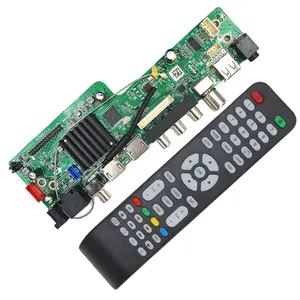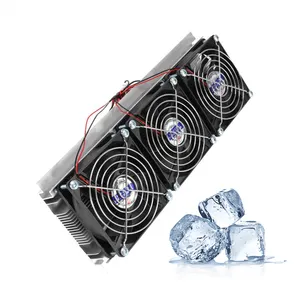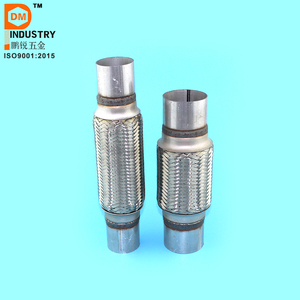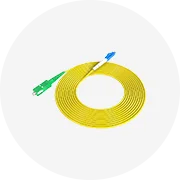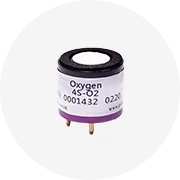Phổ biến trong ngành của bạn






Bán Buôn Lớn Công Suất Xả Xe Máy Hệ Thống Ống Xả Phụ Kiện Xe Máy Muffler Ống Xả
12,31 US$ - 13,85 US$
Đơn hàng tối thiểu: 5 Cái







Hệ thống ống xả xe máy sợi carbon 51mm 300 370 ống giảm thanh xe máy 470 mm ống sau
14,62 US$ - 15,38 US$
Đơn hàng tối thiểu: 5 Cái






Hot bán 6 inch-5 inch Bull Horn Chrome ống xả Stack ống, 36 "chiều dài cho Heavy-Duty xe tải
55,36 US$ - 62,18 US$
Đơn hàng tối thiểu: 1 Cái







Bốn thì xe hơi sang trọng đua các bộ phận van động cơ Cho Mercedes Benz 190 E 190E 2.5 16 v M102 M103 E30 3.0l 2.3l ti-hạ
0,10 US$ - 4,90 US$
Đơn hàng tối thiểu: 200 Cái


102 094 57 82 1020945782 Động Cơ Crankcase Tạm Nghỉ Hose W460 W124 W201 W123 S123 C123 phù hợp với 84-88 Mercedes 190E 2.3L
1,00 US$ - 15,00 US$
Đơn hàng tối thiểu: 10 Cái






035109601c 035109611f đầu vào và van xả động cơ phù hợp cho johnn deerre phụ tùng động cơ trong nhà máy giá
0,20 US$ - 0,50 US$
Đơn hàng tối thiểu: 100 Cái






Van Xả Động Cơ 2.3 Chất Lượng Tốt Bán Chạy Cho BENZ 190E 1020531701/230E 1020500327
1,50 US$ - 2,50 US$
Đơn hàng tối thiểu: 50 Cặp






A2710500800 A2710500900 2710500800 2710500900 Bộ Xả Trục Cam Xả Trục Cam Nạp
Sẵn sàng vận chuyển
45,00 US$ - 53,00 US$
Đơn hàng tối thiểu: 10 Cái
Vận chuyển mỗi chiếc: 4,75 US$






Nhà Máy Trực Tiếp Bán Buôn OEM Chất Lượng Cao Động Cơ 3600500127 Lượng Và Van Xả Cho Benz om327 om360 190e 2.3 230e 208
1,70 US$
Đơn hàng tối thiểu: 1000 Cặp






Cho Mercedes Benz 190e 260e 300D 300td đánh lửa khóa xi lanh W/Key 1264600604
Sẵn sàng vận chuyển
30,50 US$
Đơn hàng tối thiểu: 1 Gói
Vận chuyển mỗi chiếc: 5,38 US$






Van Phụ Kiện Máy Phát Điện Chạy Xăng Cho Benz M102.924 1020531701 Van Động Cơ Nạp Và Van Động Cơ Xả 1020500327
1,00 US$ - 2,50 US$
Đơn hàng tối thiểu: 50 Cặp






Nhà Máy Trực Tiếp Bán Buôn OEM Chất Lượng Cao Động Cơ Lượng Và Van Xả Cho Benz M102 190E Từ Các Nhà Máy Trong Thành Phố Hà Bắc
1,70 US$
Đơn hàng tối thiểu: 1000 Cặp






Mới đánh lửa khóa xi lanh W/Key cho Mercedes-Benz 190e 260e E320 E420 300td
Sẵn sàng vận chuyển
24,50 US$
Đơn hàng tối thiểu: 1 Gói
Vận chuyển mỗi chiếc: 12,31 US$






Cung Cấp Trục Cam Tùy Chỉnh Thời Gian Trục Cam Xả Cho Mercedes Benz M271 2710501601 A2710501601
Sẵn sàng vận chuyển
38,50 US$ - 41,60 US$
Đơn hàng tối thiểu: 1 Cái
Vận chuyển mỗi chiếc: 22,26 US$

MB W124 190D 190E 260E 300CE Giá Treo Ống Xả A2014920116 OEM 2014920116 Cho Mercedes Benz
Sẵn sàng vận chuyển
9,90 US$
Đơn hàng tối thiểu: 2 Cái
Vận chuyển mỗi chiếc: 10,95 US$






Jmen Cho Mercedes Benz W201 190E W124 W123 R107 W113 W115 Cổ Điển CLASS C E S G A B AMG Xe Đài Loan Auto Body Động Cơ Phụ Tùng
8,80 US$ - 50,00 US$
Đơn hàng tối thiểu: 10 Cái

1164920182 ống xả hỗ trợ phù hợp cho Mercedes cao su động cơ gắn kết miếng đệm & treo gắn Chất lượng cao
0,10 US$ - 0,50 US$
Đơn hàng tối thiểu: 200 Cái

Thương hiệu Mới DIESEL thải hạt vật chất PM cảm biến a0101536828
128,00 US$ - 133,00 US$
Đơn hàng tối thiểu: 4 Cái






Jmen Dành Cho MERCEDES BENZ 190E W201 Tay Cầm Bên Ngoài Cửa Sau Bên Trong Xe Ô Tô Phụ Tùng Thân Xe
8,80 US$ - 50,00 US$
Đơn hàng tối thiểu: 10 Cái






G 66 G66 Đối Với Mercedes Benz C E Class 752990 Các Bộ Phận Tăng Áp Điện Turbo Thiết Bị Truyền Động 730314 6NW009288
Sẵn sàng vận chuyển
52,99 US$ - 59,99 US$
Đơn hàng tối thiểu: 1 Cái
Vận chuyển mỗi chiếc: 22,26 US$

12V hiệu suất cao Hạt vật chất cảm biến PM cảm biến a0101538528 a0111531328
135,00 US$ - 138,00 US$
Đơn hàng tối thiểu: 4 Cái






Youparts Bộ điều chỉnh trục cam w204 w203 W212 C200 E200 GLK cho Mercedes Benz Bộ điều chỉnh trục cam 2710501400 2710503347
Sẵn sàng vận chuyển
41,00 US$ - 45,00 US$
Đơn hàng tối thiểu: 1 Cái
Vận chuyển mỗi chiếc: 23,24 US$
Các danh mục hàng đầu
Giới thiệu về ống xả 190e
Alibaba.com cung cấp các sản phẩm 24 ống xả 190e. Có rất nhiều ống xả 190e lựa chọn dành cho bạn, chẳng hạn như thép không gỉ, nhựa. Bạn cũng có thể chọn từ đen ống xả 190e.



